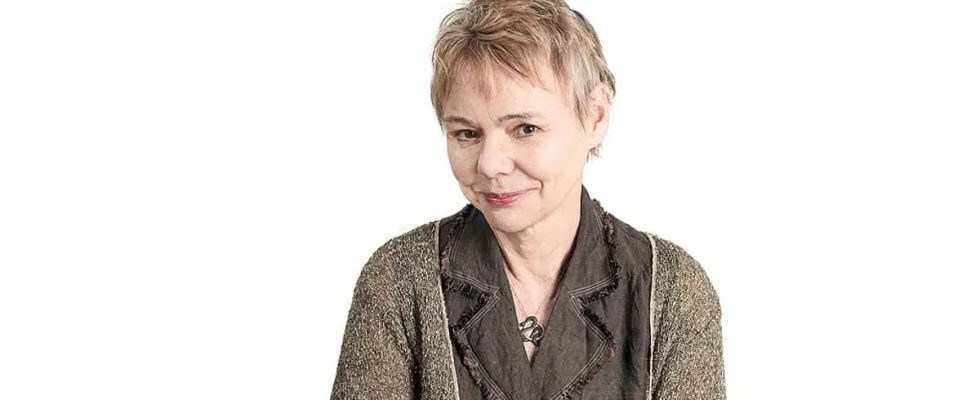For centuries, male creators will have throned almost alone in the glorious pantheon. In the wake of the #MeToo movement, women artists are finally finding on picture rails, screens and stages a light that has been veiled for too long. Even if it means smearing the mustachioed portraits of yesterday’s heroes. The white man, macho, runner, tyrannical, even if he was extricated from a phallocratic past to be put into context, is our scarecrow today. There are grounds for grievance, it must be said…
But at the time of tributes, how to celebrate the demiurges of yesteryear who have become symbols of intimate oppression? The cultural milieu walks on eggshells. All in all, if Robert Lepage, in The Riopelle project, painted the painter from L’Isle-aux-Grues under negative strokes, it is perhaps because his profile seemed to him too off-putting to magnify it, even through his creative charge. The centenary of the automatist painter raises uneasiness, like Picasso’s post-mortem fiftieth anniversary served with the usual caveats: beware, woman-eater! Nevertheless: the rays of his immense legacy dazzle his posterity.
Attempts to reconcile opposing currents are looming. So much the better ! Thus, at the TNM, the phantasmagoria The dreamer in his bath. An ode to magic, to dreams, to the imagination, to memory, this not always well-oiled show has charm and inventiveness. Above all, an approach of amplitude. Its designer, Hugo Bélanger, pays homage to male giants crowned by posterity as well as to female artists asleep in their frozen bottles. Judicious quest for balance between two turns of the pendulum.
Geniuses of the Belle Époque or the XXe century, watered with the milk of pure fantasy. Thus, the prodigious animation pioneer Georges Méliès, the master magician Robert Houdin, Winsor McCay, visionary cartoonist father of Little Nemo. At their side, pioneers, such as Alice Guy, the first director of history, who in 1896 gave birth to the delicious fiction The cabbage fairyx as a simple “director of shots”. Marquise Lepage had made it better known to us in 1995 with her documentary The forgotten garden. On the boards of the TNM, this undine of the dumb resurrects again. Also the German Dadaist photographer Hannah Höch with wildly exploded works. Like his fellow sculptor Elsa von Freytag-Loringhoven, a Dadaist baroness from whom Marcel Duchamp is said to have “borrowed” the idea of the urinal transformed into a work of art, which marked his career.
Coming out of the theater, I thought about the rocky journey of so many female creators throughout history. How many Nannerl Mozart, virtuoso harpsichordist and composer admired by her fabulous brother, had to abandon their early careers at the age of marriage? No work by his hand has been found. No dark limbo hears its harmonies vibrate. It took at the beginning of the XXe century the burning personality of Colette to triumph as a novelist after having served as a penman for her husband Willy. The French painter Sonia Delaunay waited on her side for the 1970s before tasting the honey of glory after half a century of dazzling creation. So many obstacles were sown in the way of the ladies. Enough to trip more than one.
In the cinema, it is only in the XXIe century that female directors took the helm of fiction films in large numbers. Endemic sexism, historical inequity to be repaired. A hundred times yes. The fact remains that male filmmakers in turn feel left out by the system. Better, they rant, to be a woman (native, if possible) to receive pats on the back from the institutions.
Just return things! Several museums devote their exhibitions to female artists. Should we turn our noses up at the paintings and sculptures of the very macho Rodin, Gauguin and others? These days, we erase, we condemn, we disdain masterpieces brandishing the immorality of creators six feet underground, judged according to the codes of the day. Since when does amnesia help to illuminate our trajectories to collect the pearls of the way? This past did indeed exist with its gleams and its cruelties. Let’s look him in the eye.
Like Hugo Bélanger with The dreamer in his bath, there is a way to be both in favor of gender equality and allergic to the censorship of the cultural treasures of history. To walk and chew gum at the same time, Parizeau would have said.
I dream of building a world less macho, less divided and more open than ours. Where the immortal works, designed by imperfect beings of both sexes, would illuminate minds in search of meaning for our troubled futures.
